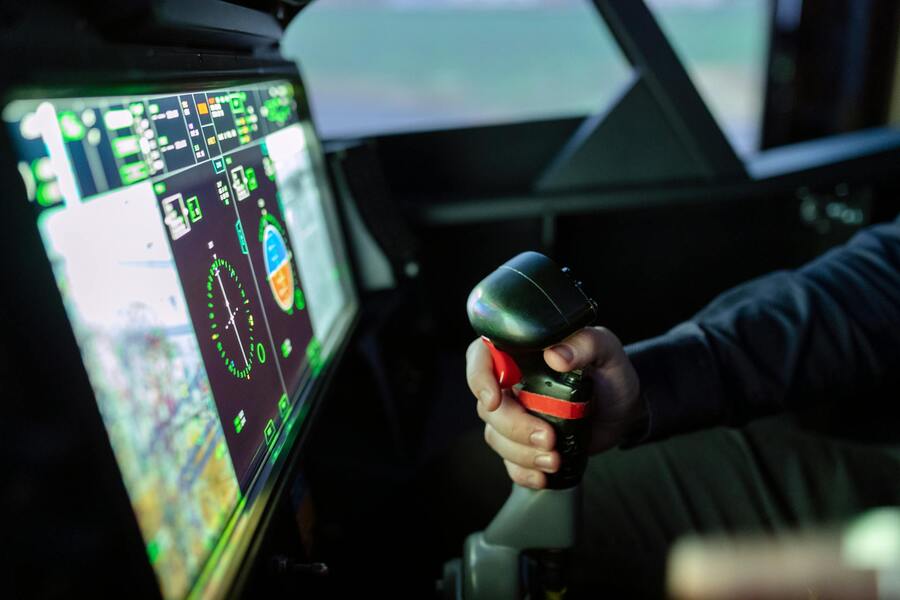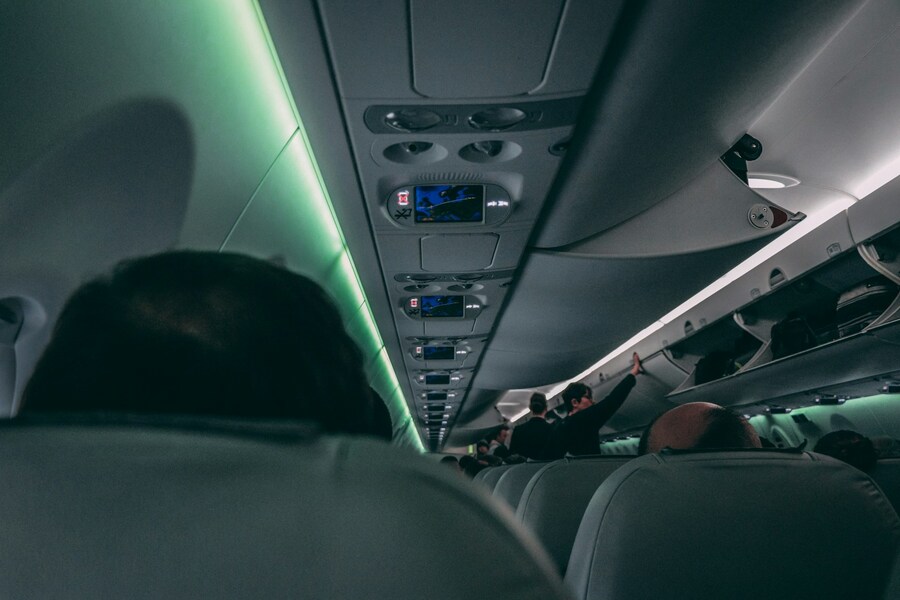Have you ever eavesdropped on the conversations of airline pilots? You might have heard them use seemingly cryptic terms like "Zulu," refer to someone named "George," or mention "flying dirty." These phrases may sound like they belong in a spy movie, but they're actually part of a specialized vocabulary used by pilots to communicate efficiently and effectively within the aviation world.
This unique jargon serves several purposes. It allows for concise and unambiguous communication, especially during critical phases of flight where clear and concise messages are paramount. For example, using terms like "tree" instead of "three" minimizes confusion and ensures that all parties involved understand the message accurately. Moreover, this specialized language helps to maintain a degree of professionalism and prevent misunderstandings that could potentially compromise flight safety.
Beyond its practical applications, this aviation lexicon also reflects the unique culture and camaraderie within the pilot community. Terms like "deadhead," which refers to off-duty crew members traveling on a flight, and "boredom tube," a playful term for the airplane cabin during long flights, offer a glimpse into the lighter side of aviation life. These terms allow pilots to connect with each other on a shared level and create a sense of camaraderie within their profession.
In this travel guide, we'll delve into some of the most common terms used by pilots, uncovering their meanings and exploring the fascinating world of aviation jargon. So, let's not waste any more time and get straight to the heart of the matter right away!
So what do pilots really mean when they talk?

Source: ThisIsEngineering/Pexels
Deadhead
The term "deadhead" doesn't necessarily mean the pilot is a Grateful Dead fan. Instead, it refers to the practice of "deadheading" where off-duty crew members use empty seats on a commercial aircraft. If a pilot says there are deadheads aboard, it means there are employees on the flight who are treated like passengers, but are getting paid to travel to or from another airport for active duty. In some cases, these employees can take the seats of paying passengers, though that's quite rare.
Zulu time
"Zulu" is a term used by pilots to refer to Greenwich Mean Time, the global time zone measured by the Royal Observatory in London. Aircraft around the world use Zulu time to coordinate with other pilots and air traffic controllers, as it would be too confusing if every plane used the local time zone they were currently in. However, when speaking to passengers over the PA, pilots typically use the destination's time zone.
Air pocket
"Air pocket" is a term used to describe a shift in wind or air pressure that frequently results in a bumpy and somewhat chaotic ride. In other words, it's turbulence. Some pilots may prefer to use the phrase "air pocket" instead of "turbulence" because it sounds less threatening and is less likely to cause panic among passengers.
George
When pilots mention "George," they're not referring to a person. Instead, they're using a playful nickname for the aircraft's autopilot system. Pilots frequently activate "George" when they're at their cruising altitude during a long-haul flight.
Boredom tube
Long flights can be tedious for passengers, and the crew isn't immune to that boredom either. In fact, some pilots jokingly refer to the airplane cabin as the "boredom tube," especially on those extended journeys where they're confined to the cockpit for hours. But just because pilots use that term doesn't mean they're not taking their job seriously – they're just acknowledging one of the more ordinary aspects of air travel in a lighthearted manner.
Flying dirty
Airplanes take to the skies in a streamlined state, known as "flying clean." This means they retract their landing gear and flaps after takeoff to maximize their aerodynamic efficiency. However, as the plane approaches its destination, the pilots prepare for landing by lowering the landing gear and flaps, a maneuver referred to as "flying dirty." This helps to slow down the aircraft as it descends towards the runway, ensuring a safe and controlled landing.

Source: Pixabay/Pexels
Tree, fife, and niner
Sharing numbers over the radio can get confusing, whether you're talking about the runway or the aircraft's identification number. To reduce this confusion, pilots use alternative words for numbers that may sound similar. For example, pilots say "fife" instead of "five" and "niner" instead of "nine." In addition, "three" is often replaced with "tree," as the lack of an "h" sound makes it easier for non-English speakers to pronounce.
Chop
The term "chop" is used to describe a low level of turbulence, much like the small, choppy waves on the water. These smaller waves are much easier to navigate through than the larger waves that crash against the side of the boat. Similarly, in the air, a "choppy" atmosphere is far less disruptive for passengers to fly through than intense turbulence.
Souls
Pilots use the term "souls" to refer to every living being on board the aircraft. This includes passengers, crew members, and sometimes even registered pets that are throughout the cabin and cargo hold. This terminology is commonly used during emergency situations, as the pilot informs rescue teams about the total number of people they need to search for if something goes wrong.
Pan-pan
"Pan-pan" is another uncommon term associated with emergency circumstances. Essentially, it's a way of telling everyone nearby to "stop what they're doing and listen." This term is primarily used in communication between pilots and air traffic controllers to convey a potential emergency. For instance, pilots may use the term if they're experiencing engine trouble and are requesting an emergency landing.
Keep the blue side up
You've probably heard the expression "break a leg" when it comes to theater performances. In a similar vein, pilots often wish each other "keep the blue side up" to convey a message of good luck. This phrase originates from instructions given to pilots who become disoriented and have trouble determining which way is up. By keeping the blue side up, they're ensuring that the plane is properly oriented with the sky above them.
Say goodbye to expensive airport parking: affordable options await with ParkingNearAirports.io!

Source: Arthur Edelmans/Unsplash
Have you ever heard something about off-site parking? If not, we recommend you take a closer look at this part of the article, as this information will be handy for those who prefer to travel by air and get to the airport by their own car.
Most people suppose that parking at the airport is the fastest and most convenient option for them. However, it's not actually true. We'll explain to you why.
To be true, being in a terminal parking lot isn't convenient at all. Although on-site airport parking is the nearest place where you can leave your vehicle for the period of a trip, you can face the following difficulties:
- You will need to find a spot in a crowded lot,
- You will need to carry the luggage all the way through the parking lot,
- You must pay expensive fees without great service.
Sounds not good, right? However, we found an excellent solution for you – in this case, off-site parking can become a savior for you. So if you're trying to find a parking spot with great service nearby the airport you're flying from and don't want to leave there the most significant part of your budget, pay attention to this option.
How does it work?

Source: Martin Reisch/Unsplash
Obviously, people who chose a car as a way to get to the airport want to leave their vehicle safely while traveling and not to face the problems we described above. So what can off-site airport parking offer its customers?
Although a few miles usually separate such parking from the airport, you shouldn't worry about this. Off-site parking provides free shuttles going back and forth between the parking lot and the airport. Thanks to this, it removes any worries about getting stuck in traffic on the way to the airport during peak times. So all you need to do is choose the best time for you and inform the parking lot staff.
How does it work? Actually, everything is straightforward: when you come to the entrance, the staff will remove your luggage from your car and load it onto the shuttle, which will take you and your bags to the terminal. Then, the vehicle will be parked securely.
In addition, this type of parking is much cheaper, and this is good news, as nobody wants to waste money. Therefore, off-site parking is the perfect option to receive excellent service and save money at the same time.
Want to find some great offers? You don't need to go somewhere – just find it right here!

Source: Seyi Ariyo/Unsplash
We're glad to inform you that you can find this solution right here. Our booking platform, ParkingNearAirports.io, offers the best prices on airport car parking and bundles hotel and parking packages. Besides, we provide the services for top cruise ports in Florida, Louisiana, Maryland, New Jersey, and Texas.
Our platform allows you to make an airport parking reservation through a few clicks within the application. As a result, customers receive a booking confirmation and a guaranteed parking spot upon arrival at the off-airport lot. Besides, if plans change, you can cancel hassle-free and receive a refund.
To understand it better, we would like to give you an example. Let's imagine that you're planning a trip to a popular destination. Regardless of your departure point, you can find convenient and affordable parking near airport you're flying from. Also, ParkingNearAirports.io offers its customers special airport parking coupons. With the help of these coupons, you can make the price for parking even two times less. So don't forget to use them to save as much money as possible.
You can find all the necessary and helpful information connected with the off-site airport parking on our official website. Enjoy traveling!






